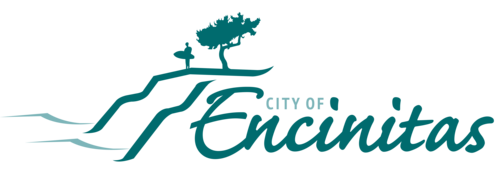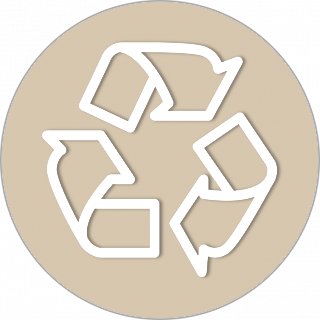
Zero Waste
The Zero Waste strategy in the City’s Climate Action Plan (CAP) aims to reduce the amount of waste sent to local landfills. Methane—a greenhouse gas (GHG) that is about 25 times more potent than carbon dioxide (CO2)—is emitted when waste (primarily organic material) decomposes in landfills. Successful implementation of this strategy depends on the expansion of recycling and composting programs, in addition to participation from City residents and businesses to reduce waste and increase diversion.
Implementation of the Zero Waste strategy is estimated to reduce the City’s GHG emissions by 2,830 metric tons of carbon dioxide equivalent (MTCO2e) by 2020 and 9,216 MTCO2e by 2030.
Explore the sections below to learn about the City’s planned and ongoing actions to achieve these goals.
ZW-1: Implement a Zero Waste Program
Divert Solid Waste
The Zero Waste Strategy, as outlined in the City’s CAP, aims to reduce the amount of waste sent to local landfills. CAP Measure ZW-1 commits the City to implementing a Zero Waste Program in which the goal is to reduce waste disposal from residents and businesses by sorting and diverting recyclable and organic materials. In particular, organic materials, such as food and landscape waste, can generate a significant amount of greenhouse gas emissions. Organic materials decompose in a manner that leads to the emission of methane, a greenhouse gas that is 25 times more potent than carbon dioxide. When organic waste is diverted from landfills to be processed in an anaerobic digester, proper decomposition can occur through the capture and reuse of the methane and waste material.
The City works closely with EDCO, our contracted waste hauler, to execute the CAP’s goals. EDCO leverages green technologies, such as a state-of-the-art Resource Recovery Facility, that properly sorts the City’s co-mingled recycling waste. In 2021, EDCO began collecting and processing food waste for recycling. This was an important step towards diverting organic waste away from landfills.
To learn more about the City’s Zero Waste programs, visit this website.
UNIT | "Pounds Per Person Per Day" shows the approximate amount of waste each resident of Encinitas produces per day. | lbs/person/dayPounds per Person per Day |
"Pounds Per Person Per Day" shows the approximate amount of waste each resident of Encinitas produces per day. | lbs/person/dayPounds per Person per Day |
Last updated July 10, 2024
ZW-1: Implement a Zero Waste Program
Organic (Green Waste and Food Waste) Recycling
SB 1383 requires all California residents and businesses to recycle organic waste beginning January 1, 2022. In early 2021, EDCO completed construction of an anaerobic digestion (AD) facility to serve the San Diego region, including Encinitas residents. The AD facility uses microorganisms to break down material into digestate and renewable natural gas (RNG) in an air-tight environment that eliminates the release of methane. Digestate is rich in nutrients and can be further processed into fertilizer for crops. RNG can also be used to fuel trucks or for energy, which displaces the need for fossil fuels. Food scraps and green waste generated in Encinitas are now collected and processed at EDCO's AD facility.
Curbside organics recycling for residential generators began in June of 2021. Commercial enrollment for organics collection—including multifamily properties and businesses—began in the fall of 2021 and 100% enrollment was completed in July 2022.
In 2021, the City adopted the Mandatory Organics Recycling and Edible Food Recovery Ordinance (Ordinance No. 2022-15), with an effective date of January 1, 2022. In compliance with SB 1383, Ordinance No. 2022-15 requires all generators to recycle organics, and mandates that specific edible food generators recover and donate leftover food products to local charitable food organizations.
Last updated May 2, 2023
ZW-1: Implement a Zero Waste Program
Construction Waste Recycling and Edible Food Recovery
To comply with SB 1383, the City updated its Solid Waste Management and Construction and Demolition Debris Recycling ordinances in 2021 (Ordinance Nos. 2022-16 and 2022-17). These include a 5% increase (from 60% to 65%) in the percentage of construction debris that must be recycled. The ordinances became effective on January 1, 2022.
Additionally, the City introduced a new ordinance in 2021, Mandatory Organics Recycling and Edible Food Recovery (Ordinance 2022-15). Effective January 1, 2022, Ordinance No. 2022-15 not only requires all generators to recycle organics, but also mandates that some edible food generators donate any leftover food products to local organizations.
Last updated May 2, 2023
ZW-1: Implement a Zero Waste Program
Education and Outreach
The City supports at-home management of organic waste through educational workshops—such as an annual Zero Waste Fair—and offers subsidies to purchase compost and worm bins. The City frequently partners with local organizations such as the Solana Center for Environmental Innovation, I Love a Clean San Diego, BCK Programs, and several Encinitas schools for various outreach events and programming.
Over the years, through periodic audits and observation, City staff has found that recyclable material can sometimes be misplaced in the trash and vice-versa. In 2021, to help improve and promote the City’s blue bin recycling program, the City contracted the Solana Center to create a how-to video and resource packet for multi-family home property managers to share with their residents. The goal of this initiative was to improve residents’ recycling habits and achieve a better understanding of how different types of materials should be disposed of.
Last updated May 2, 2023
ZW-1: Implement a Zero Waste Program
Balloon Ordinance
In 2022, City Council unanimously passed the ‘Lighter-than-air’ Balloon Ordinance, restricting the sale of helium (or any gas lighter than air) filled balloons. The National Oceanic and Atmospheric Administration cited balloons as a top pollutant that poses harmful consequences to marine life. Furthermore, helium-filled balloons are often found littering Encinitas parks and beaches and are the most common form of floating garbage within 200 miles of the region’s shoreline.
Last updated July 10, 2024
Divert Solid Waste
How You Can Help
Last updated June 28, 2022
Divert Solid Waste
Smoke-Free Ordinance
New smoking rules took effect in July 2023 in Encinitas, restricting smoking and vaping in all public places. This new law follows in the footsteps of similar regulations enacted by many other Southern California communities, including Santa Barbara, Beverly Hills, and Manhattan Beach. The goal of the new rule is to reduce waste, protect the environment, and limit secondhand smoke exposure to the public.
The number one waste item found at beach cleans ups in San Diego County is cigarette butts. Tobacco waste is one of the main sources of marine plastic pollution worldwide. By enacting the ordinance, the City of Encinitas hopes to eliminate as much waste as possible and further contribute to the beautification of the city.
In addition to the positive environmental effects this ordinance can create, it will also help alleviate the negative effects of secondhand smoking. The U.S. Environmental Protection Agency found the effects of secondhand smoke are a health risk to the public and therefore classified it as a “group A carcinogen”, the most dangerous class of toxin. The City was concerned about the potential health effects second-hand smoke could have on the community and cited this as one of their main reasons to adopt the regulation.
Last updated July 10, 2024



